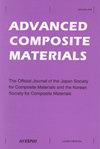具有张力和压实的3D打印:防止3D打印连续碳纤维增强热塑性塑料中的纤维波纹
IF 2.3
3区 材料科学
Q3 MATERIALS SCIENCE, COMPOSITES
引用次数: 0
摘要
摘要连续碳纤维增强热塑性塑料(c-CFRTP)的3D打印导致纤维波纹和空隙,限制了机械性能。实验研究了3D打印过程中拉伸力和压实力对抑制纤维波纹的影响。通过异步控制送丝速度和打印速度,沿纤维产生张力,使纤维拉直。通过设置层高度来减小空隙,通过喷嘴尖端施加压实力。试样横截面和表面的显微图像表明,经过这些处理后,纤维的波纹度和空隙减少了,三点弯曲测试表明力学性能得到了改善。这种张紧力和压实力的组合分别使弯曲刚度和强度提高28%和45%。张紧力和压实力是高性能c-CFRTP 3D打印的重要打印参数。关键词:聚合物基复合材料力学性能力学测试3d打印公开声明作者未报告潜在利益冲突数据可得性声明支持本研究结果的数据可根据合理要求从通讯作者N. Ichihara处获得。本研究得到了日本科学促进会(JSPS) KAKENHI(批准号22K20415)的支持。同步辐射实验由日本同步辐射研究所(JASRI)批准(提案号2018B1842)在SPring-8的BL46XU上进行。本文章由计算机程序翻译,如有差异,请以英文原文为准。
3D printing with tension and compaction: prevention of fiber waviness in 3D-printed continuous carbon fiber–reinforced thermoplastics
AbstractThe 3D printing of continuous carbon fiber–reinforced thermoplastics (c-CFRTP) results in fiber waviness and voids that limit mechanical performance. The effects of tensioning and compaction forces during 3D printing were experimentally studied to suppress fiber waviness. A tensioning force was generated along the filament to straighten the fibers by asynchronously controlling the filament feeding and print speeds. A compaction force was applied through the nozzle tip by setting the layer height to reduce the voids. Microscopic images of specimen cross-sections and surfaces indicated a reduction in fiber waviness and voids after these treatments, and three-point bending tests demonstrated improved mechanical properties. This combination of tensioning and compaction forces achieved 28% and 45% higher bending stiffness and strength, respectively. Tensioning and compaction forces are important printing parameters for the 3D printing of high-performance c-CFRTP.Keywords: Polymer-matrix compositesmechanical propertiesmechanical testing3D printing Disclosure statementNo potential conflict of interest was reported by the authors.Data availability statementThe data that support the findings of this study are available from the corresponding author, N. Ichihara, upon reasonable request.Additional informationFundingThis work was supported by the Japan Society for the Promotion of Science (JSPS) KAKENHI (Grant No. 22K20415). The synchrotron radiation experiments were performed at BL46XU of SPring-8 with the approval of the Japan Synchrotron Radiation Research Institute (JASRI) (Proposal No. 2018B1842).
求助全文
通过发布文献求助,成功后即可免费获取论文全文。
去求助
来源期刊

Advanced Composite Materials
工程技术-材料科学:复合
CiteScore
5.00
自引率
20.70%
发文量
54
审稿时长
3 months
期刊介绍:
"Advanced Composite Materials (ACM), a bi-monthly publication of the Japan Society for Composite Materials and the Korean Society for Composite Materials, provides an international forum for researchers, manufacturers and designers who are working in the field of composite materials and their structures. Issues contain articles on all aspects of current scientific and technological progress in this interdisciplinary field. The topics of interest are physical, chemical, mechanical and other properties of advanced composites as well as their constituent materials; experimental and theoretical studies relating microscopic to macroscopic behavior; testing and evaluation with emphasis on environmental effects and reliability; novel techniques of fabricating various types of composites and of forming structural components utilizing these materials; design and analysis for specific applications.
Advanced Composite Materials publishes refereed original research papers, review papers, technical papers and short notes as well as some translated papers originally published in the Journal of the Japan Society for Composite Materials. Issues also contain news items such as information on new materials and their processing."
 求助内容:
求助内容: 应助结果提醒方式:
应助结果提醒方式:


